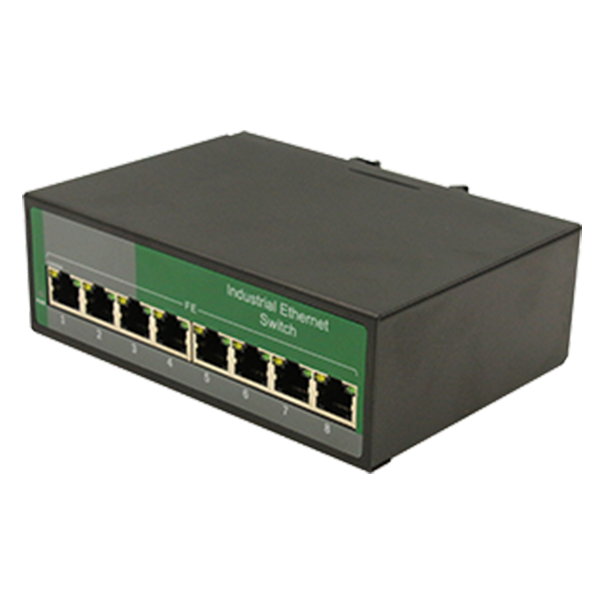SEARCH
— 葡萄酒 | 威士忌 | 白兰地 | 啤酒 —
— 葡萄酒 | 威士忌 | 白兰地 | 啤酒 —

industrial ethernet switch
Good afternoon, my network engineer friends. Switches play a crucial role as the core devices in local area networks (LANs). They not only connect different network devices but also optimize network performance and security by segmenting virtual LANs (VLANs).
In switches, the configuration of port modes is one of the key factors to ensure the normal operation of the network. The port mode configuration in switches determines how ports handle VLAN tags.
Properly configuring port modes can help us achieve traffic isolation, improve bandwidth utilization, and enhance network security in our work.
Today, let’s discuss these three port modes—Access, Hybrid, and Trunk. Each has its own characteristics and is suitable for different network environments and needs.
An Access port is a type of port that can only belong to one VLAN. This type of port does not transmit data frames with VLAN tags. When a device (such as a computer) is connected to an Access port, the device automatically becomes part of the VLAN associated with that port.
switchport mode access.switchport access vlan <vlan-id> to specify which VLAN the port should belong to.Suppose we have an office network where all employees are in the same VLAN. We can configure an Access port to connect their computers as follows:
Switch(config)# interface GigabitEthernet0/1 // Enter port configuration mode Switch(config-if)# switchport mode access // Set port mode to Access Switch(config-if)# switchport access vlan 10 // Assign the port to VLAN 10
All devices connected to this port will automatically become part of VLAN 10.
A Hybrid port is a type of port that can belong to multiple VLANs. Unlike Access ports, Hybrid ports can be configured to send untagged data frames on some VLANs and tagged data frames on other VLANs.
This means Hybrid ports can flexibly handle different types of traffic, making them an ideal choice for connecting devices that need access to multiple VLANs.
switchport mode hybrid.switchport hybrid untagged vlan <vlan-id> to specify which VLANs’ data frames should be sent untagged.switchport hybrid tagged vlan <vlan-id> to specify which VLANs’ data frames should be sent tagged.Suppose we have a server that needs to access two VLANs: VLAN 20 (office network) and VLAN 30 (backup network). We can configure a Hybrid port as follows:
Switch(config)# interface GigabitEthernet0/2 // Enter port configuration mode Switch(config-if)# switchport mode hybrid // Set port mode to Hybrid Switch(config-if)# switchport hybrid untagged vlan 20 // Untagged VLAN 20 Switch(config-if)# switchport hybrid tagged vlan 30 // Tagged VLAN 30
The server can access VLAN 20 via untagged data frames and VLAN 30 via tagged data frames.
A Trunk port is a type of port that can carry data streams from multiple VLANs. Unlike Access and Hybrid ports, Trunk ports always send data frames with VLAN tags.
Trunk ports are mainly used to connect two switches or connect switches with routers and other devices to enable VLAN communication across devices.
switchport mode trunk.switchport trunk allowed vlan <vlan-id> to specify which VLANs’ data frames can pass through the Trunk port.Suppose we need to connect two switches, Switch1 and Switch2, so they can share traffic from VLAN 10 and VLAN 20. We can configure Trunk ports as follows:
Switch1(config)# interface GigabitEthernet0/24 // Enter port configuration mode Switch1(config-if)# switchport mode trunk // Set port mode to Trunk Switch1(config-if)# switchport trunk allowed vlan add 10,20 // Allow VLAN 10 and VLAN 20 to pass Switch2(config)# interface GigabitEthernet0/24 // Enter port configuration mode Switch2(config-if)# switchport mode trunk // Set port mode to Trunk Switch2(config-if)# switchport trunk allowed vlan add 10,20 // Allow VLAN 10 and VLAN 20 to pass
Ladies and gentlemen, get ready for the ultimate showdown between two Ethernet cable heavyweights: Cat5 vs Cat6 Ethernet Cables. In one corner, we have the seasoned veteran, Cat5, and in the other, the up-and-coming challenger, Cat6. Both contende...
View detailsAs a technical support engineer at Yeaplink, I deeply understand the importance of industrial-grade temperature range for equipment performance and reliability. Let me introduce you to the exceptional performance of our SR800-D dual 5G industrial ...
View detailsRecently, I read an article in a technical publication about electromagnetic interference and its prevention. After reading it, I was deeply inspired and it sparked extensive discussions among our readers.
View detailsA slow internet speed can make life feel like a dark tunnel! WiFi has become an essential part of many people's lives, and internet speed is closely related to personal happiness. However, we often encounter situations where the home WiFi gets slo...
View detailsMo